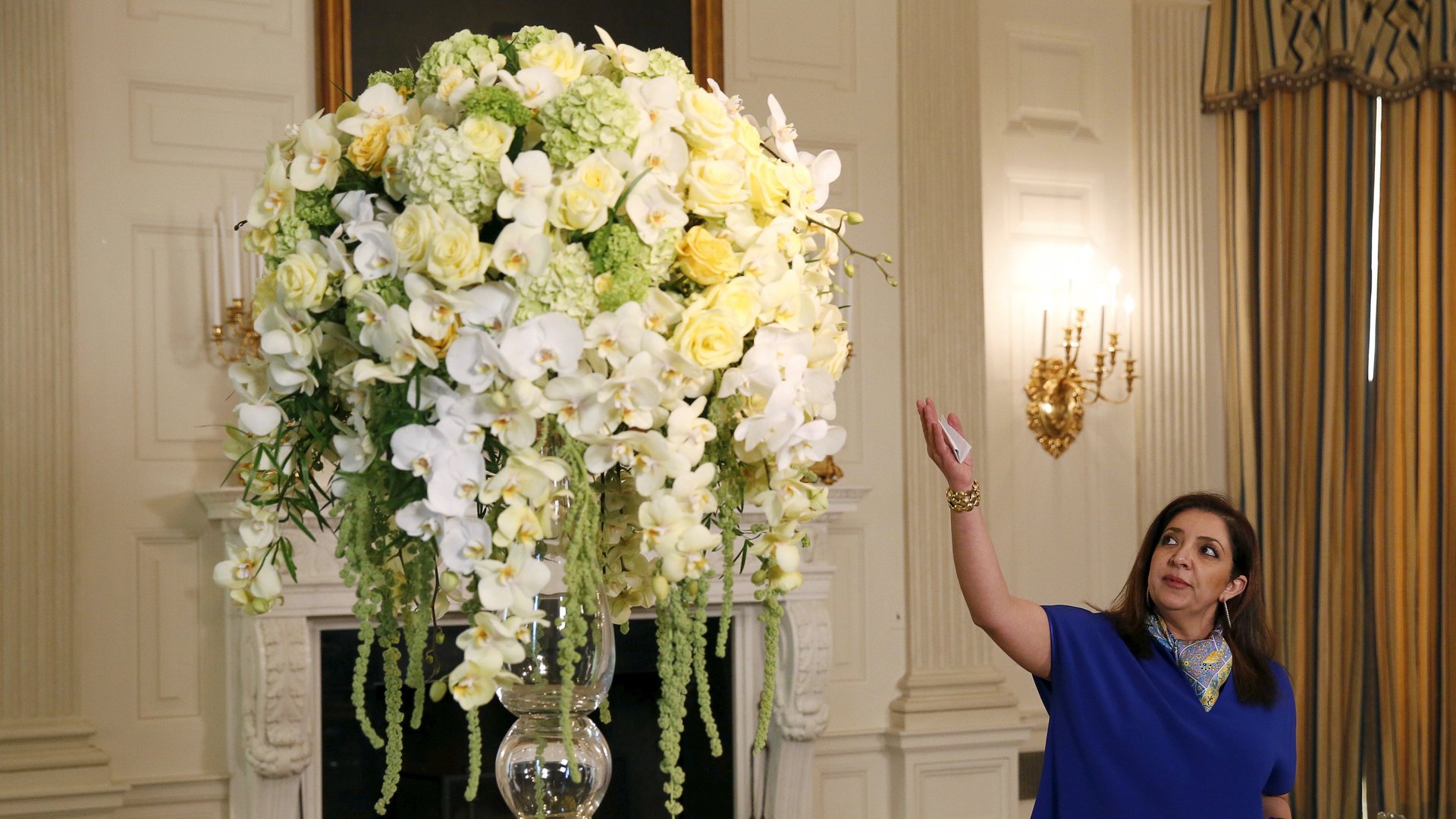The White House buys foreign flowers as US growers see business wilt
You might imagine that an administration intent on making America great again would be sure to display homegrown flowers in the White House.


You might imagine that an administration intent on making America great again would be sure to display homegrown flowers in the White House.
But that is not the case. As US cultivators struggle to compete with imports, team Trump has not acted on pleas from the American flower lobby to fill the commander in chief’s residence with local bouquets, according to a report by Jerry Hagstrom in the National Journal.
Certified American Grown, the lobby group for the American flower industry, was created in 2014 to help promote homegrown blooms. It urges retailers, designers, and consumers to choose domestic flowers, arguing that local blossoms are fresher, produced under better environmental and labor conditions, and are competitively priced. The group believes its cause would be greatly advanced if the most influential home in the country displayed petal patriotism, and it has continually lobbied for an exclusive place for American bouquets in the White House.
The efforts have had limited success in the past. In 2014, deputy agriculture secretary Krysta Harden asked the Obama administration to choose locally grown bouquets. The White House chose all-American flowers for the 2014 state dinner for French president Francois Hollande but didn’t turn it into a domestic policy.
With Donald Trump’s election, American cultivators were hopeful that they’d see more success. The president’s emphasis on “America first” gave them the impression he would be more inclined to choose only US flowers. It seemed like “a no-brainer,” Kasey Cronquist, head of Certified American Grown and the California Cut Flower Commission, tells National Journal. “I think if more citizens knew that the White House was displaying Colombian and Ecuadorian flowers, they would be shocked.”
Growers’ groups did secure meetings with the White House public liaison and with an aide to agriculture secretary Sonny Perdue, but hope bloomed prematurely, it seems. So far, the only response to their call for all-American bouquets has been noncommittal: The White House claims to be mulling the idea.
Still, in fairness to both the Trump and Obama administrations, they didn’t create the crisis that plagues American flower cultivators. The roots of the problem lie in foreign policy decisions made decades ago.
In 1961, the US Agency for International Development helped Colombia develop a flower industry in an effort to combat communism, and that country has been exporting its blooms to the US since 1965. Thirty years after this initial US effort, in 1991 Congress offered duty-free access to products, flowers among them, coming from Bolivia, Ecuador, Peru, and Colombia. This time the idea was to combat the lucrative illegal drug trade and motivate Andean farmers to cultivate legal crops.
US growers have paid the price for those policy decisions. Today foreign blooms make up more than 80% of the American market, which generates $26 billion annually. For obvious reasons, local cultivators don’t think that’s so great.